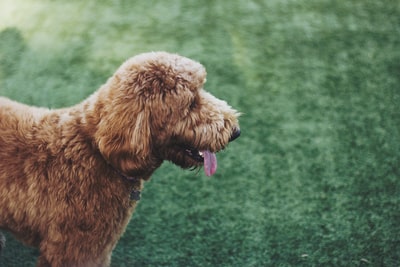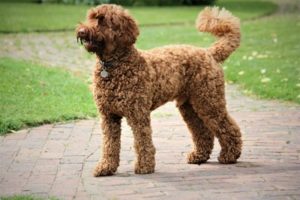
Australian Labradoodles are a cross between the Labrador Retriever and the Standard or Miniature Poodle. They were first bred in Australia in 1988 by Wally Conron of the Royal Guide Dogs Association of Australia. The Australian Labradoodle is a popular choice for families as they are intelligent, affectionate, and have low-shedding coats which make them ideal for allergy sufferers. Australian Labradoodles come in various colors, including black, chocolate, cream, and red. They typically stand 18-24 inches tall and weigh 30-45 pounds.
Characteristics
Australian Labradoodles are intelligent, friendly, and affectionate dogs that make great family pets. They are also known for being very good with children. Australian Labradoodles have low-shedding coats that come in various colors, including black, chocolate, cream, and red. T
hey typically stand 18-24 inches tall and weigh 30-45 pounds. Australian Labradoodles are generally easy to train and are good at obedience and agility training.
Temperament
Australian Labradoodles are intelligent, friendly, and affectionate dogs that make great family pets. They are also known for being very good with children. Australian Labradoodles have a reputation for being gentle, loving, and intelligent dogs that make great companions.
Health
Australian Labradoodles are generally healthy dogs, but they are susceptible to certain health conditions like all breeds. Some of the health conditions include:
- Australian Labradoodles are prone to hip and elbow dysplasia.
- Australian Labradoodles are also susceptible to patellar luxation, which is when the kneecap slips out of place.
- Australian Labradoodles may suffer from eye problems such as cataracts, glaucoma, and progressive retinal atrophy.
- Australian Labradoodles are at risk for deafness, which can be congenital or acquired later in life.
- Australian Labradoodles may be affected by von Willebrand’s disease, a blood disorder that prevents clotting.
- Australian Labradoodles can get dental problems such as tartar buildup, gum disease, and tooth loss.
- Australian Labradoodles may be prone to skin problems such as allergies, hot spots, and seborrhea.
- Australian Labradoodles are susceptible to various types of cancer, including lymphoma and hemangiosarcoma.
- Australian Labradoodles may suffer from joint problems such as arthritis and dysplasia.
- Australian Labradoodles are also at risk for obesity, which can lead to health problems such as diabetes and heart disease.
- Australian Labradoodles may be affected by Addison’s disease, which is a hormone imbalance.
- Australian Labradoodles can get hypothyroidism, which is an underactive thyroid gland.
- Australian Labradoodles may suffer from epilepsy, which is a neurological disorder.
- Australian Labradoodles are also at risk for von Willebrand’s disease, a blood disorder that prevents clotting.
- Australian Labradoodles may be prone to hip and elbow dysplasia.
Australian Labradoodles should have annual checkups with their veterinarian and routine vaccinations.
Maintenance
Australian Labradoodles are relatively low-maintenance dogs. They only need to be brushed a few times a week and their nails should be trimmed regularly. Australian Labradoodles also need to have their teeth brushed regularly to prevent dental problems. Australian Labradoodles should be exercised daily, but they do not require a lot of exercise.
Grooming
Australian Labradoodles only need to be brushed a few times a week and their nails should be trimmed regularly. Australian Labradoodles also need to have their teeth brushed regularly to prevent dental problems. Australian Labradoodle coats can be clipped short or left long, depending on the owner’s preference.
Training
Australian Labradoodles are generally easy to train and are good at obedience and agility training. Australian Labradoodles should be trained with positive reinforcement methods, such as rewards and praise. Australian Labradoodles need to be socialized from an early age to prevent shyness and fearfulness around people. Australian Labradoodles should be obedience trained and should know basic commands such as sit, stay, come, and down. Australian Labradoodles can be easy to train if the owner is consistent with training methods.
Australian Labradoodles can be trained to do tricks, such as shaking hands or rollover. Australian Labradoodles can also be trained for agility, obedience, flyball, tracking, and herding trials. Australian Labradoodles make great service dogs and therapy dogs.
Therapy/Service Dog Training
Australian Labradoodles make great service dogs and therapy dogs. Australian Labradoodles that are being trained for service dog work need to have a good temperament and be able to perform tasks that help their owner. Australian Labradoodles that are being trained for therapy dog work need to be gentle and loving. Australian Labradoodles can be trained to do tasks such as retrieving objects, opening doors, and turning lights off and on. Australian Labradoodles can also be trained to provide emotional support and comfort to their owners.
Australian Labradoodles can make great service dogs and therapy dogs with the proper training.







